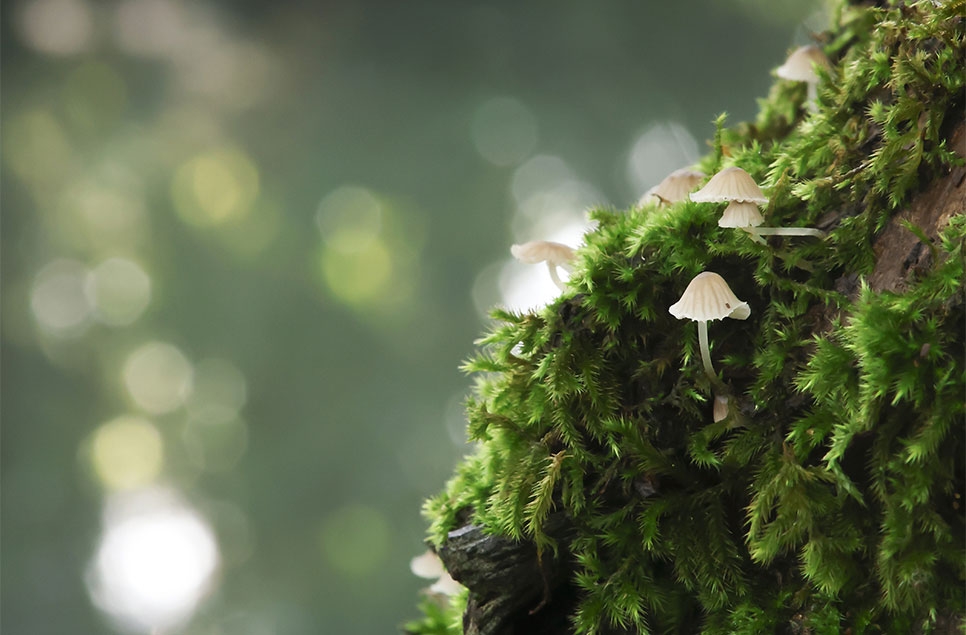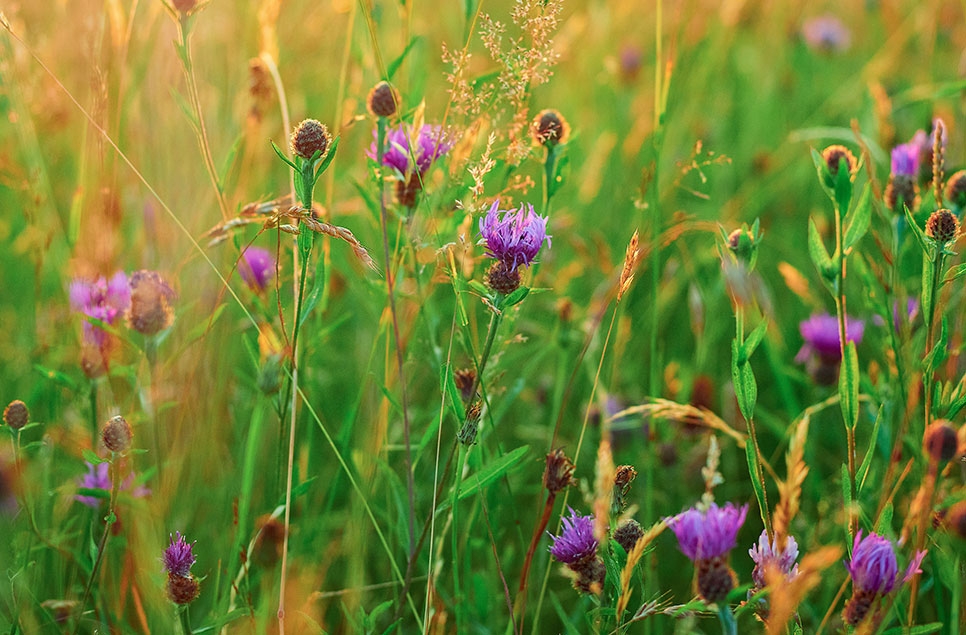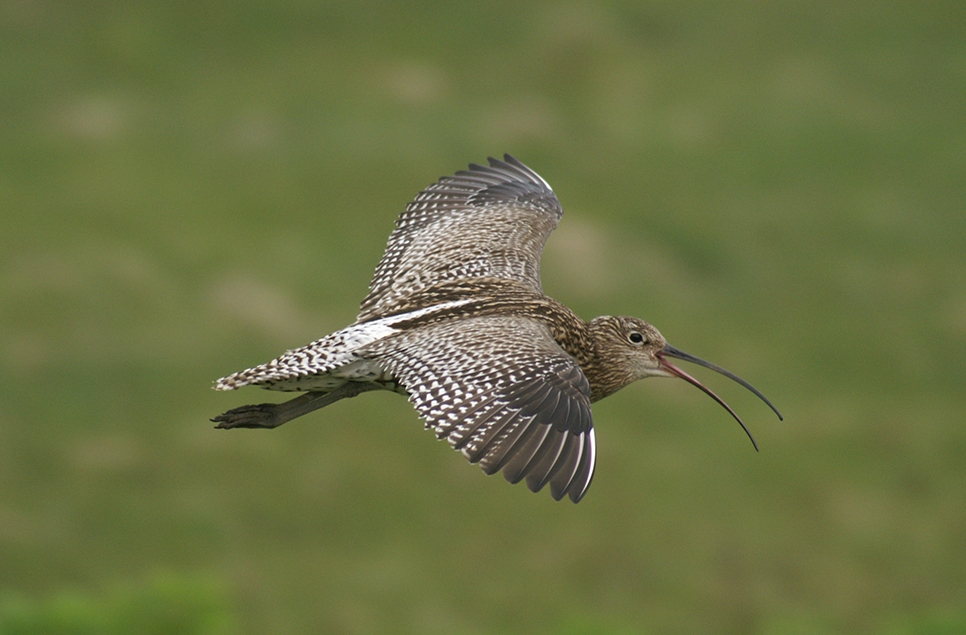Summer stories from WWT’s wetland reserves
This summer has brought a wonderful mix of wildlife highlights from across our wetland reserves. From dragonflies skimming the water to lively gatherings of waders, each site has had its own successes and surprises.
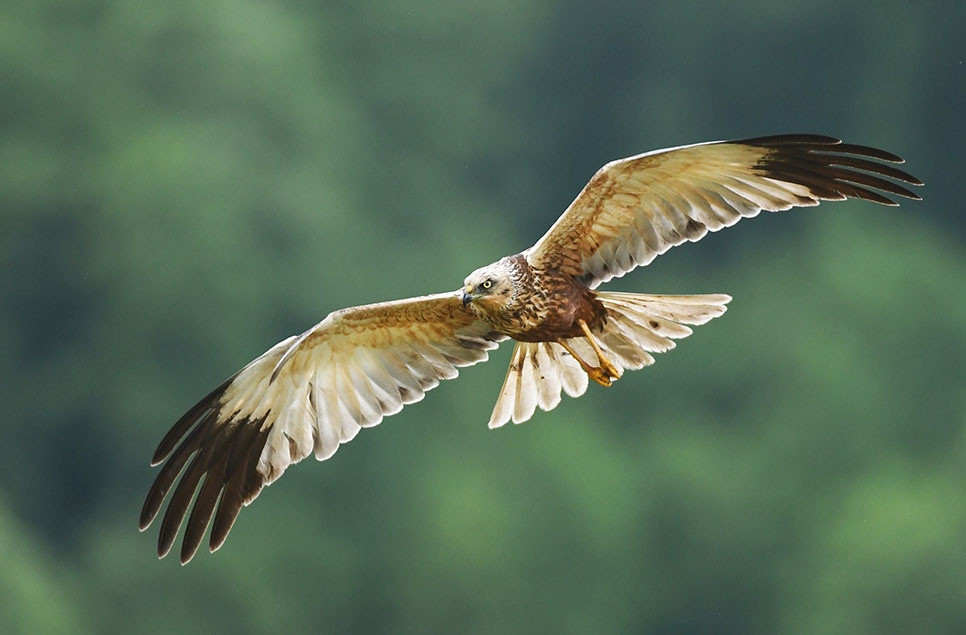
Join us for a tour of the sights, sounds, and stories from a busy summer across our sites, brought to you by Leigh Marshall, our Head of Reserve Management.
Let’s dive in…….
WWT London: Scraping by – all in a day’s work
It’s been all go on the reserve this summer and we’ve been loving every muddy minute of it! Summer is the busiest time of year for us, as we rolled up our sleeves (and occasionally our trousers) to give our wader scrape and main lake islands a bit of a trim.
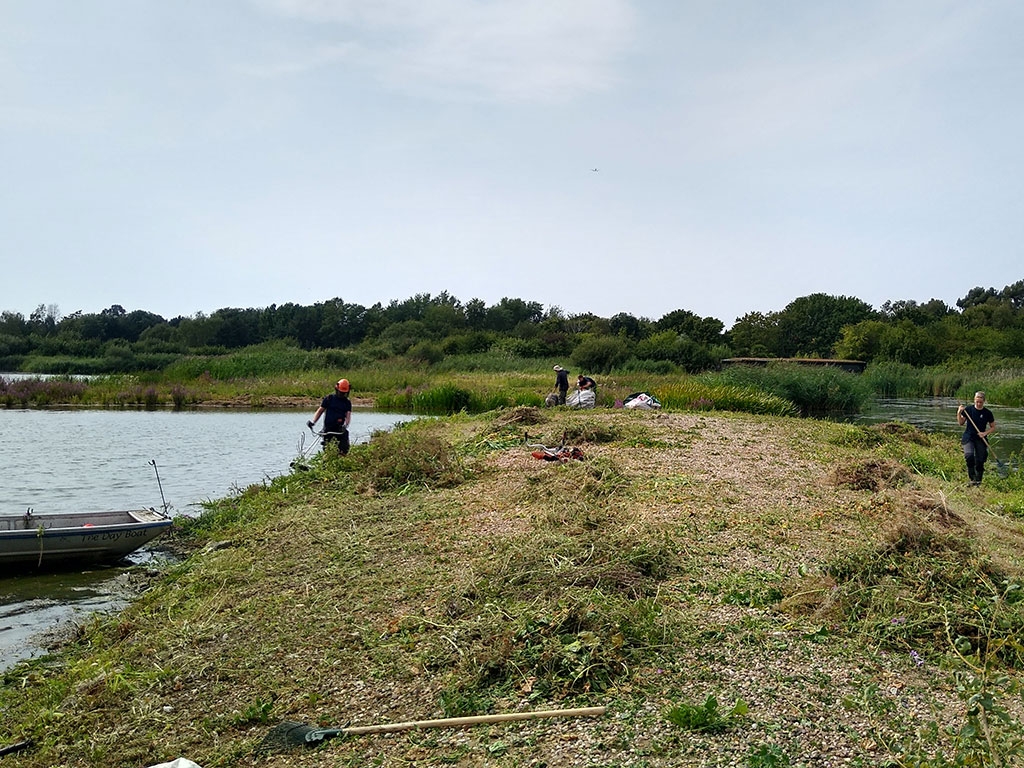
By clearing away vegetation, we’re making sure these spots stay perfect for our superstar passage and wintering visitors – from the dashing green sandpiper and elusive Jack snipe to the elegant black-tailed godwit, little ringed plover and even the occasional stonechat. We’re also looking forward to welcoming water pipit, teal and shoveler.
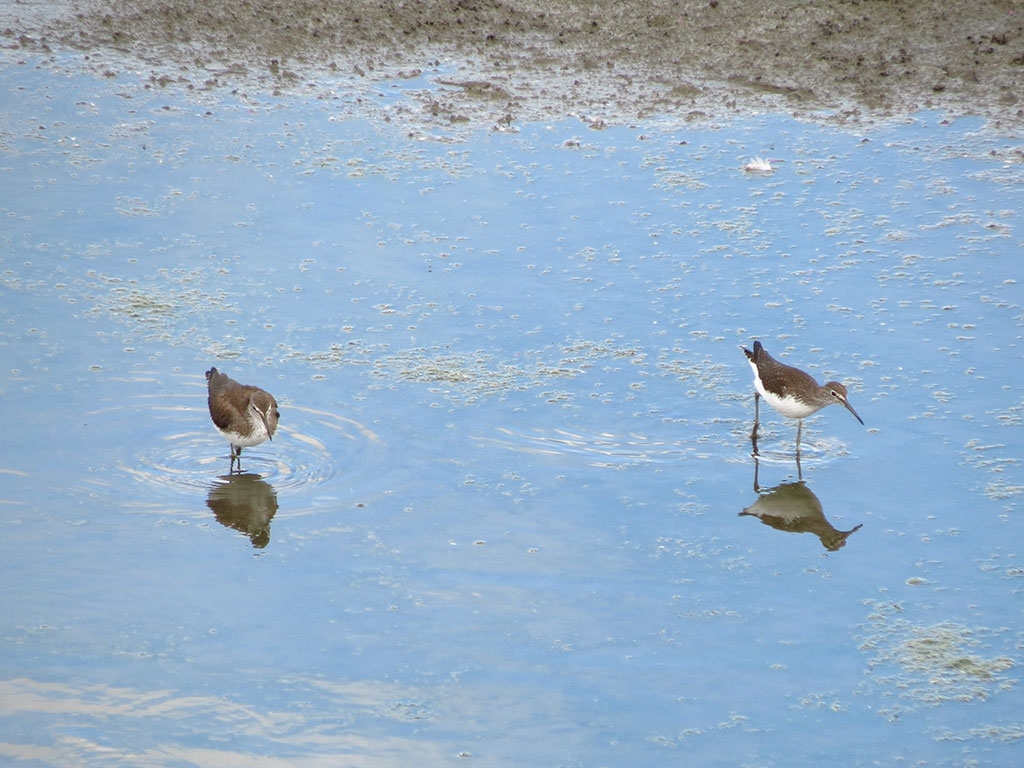 Green sandpiper
Green sandpiper
Making hay while the sun shines
We’re also making hay next door on the steep East Bank. By doing both jobs at the same time it means we can welcome back the waders and ducks as quickly as possible, with minimal disturbance.
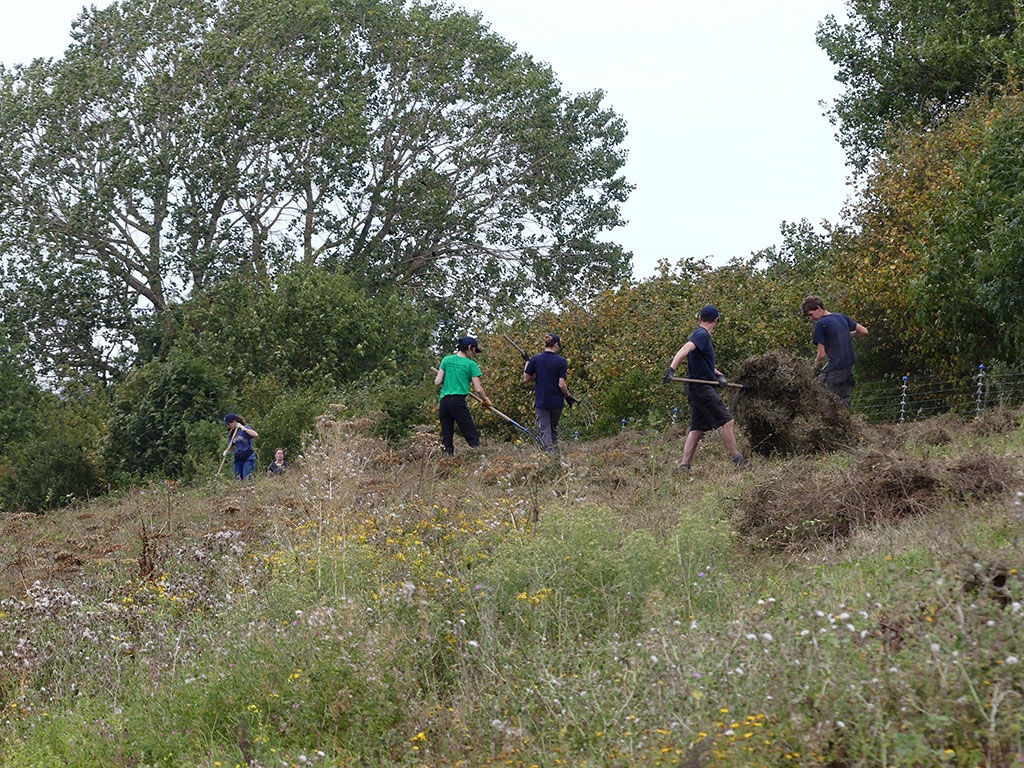 Cutting hay on the East Bank at WWT London Wetland Centre
Cutting hay on the East Bank at WWT London Wetland Centre
Dragons in the air
It’s been a cracking dragonfly season, with larger than normal counts of small red-eyed damselfly and Norfolk hawker. Towards the middle of August, the numbers of migrant hawkers started to build up too and we even welcomed a brand-new species to the reserve: the southern migrant hawker.
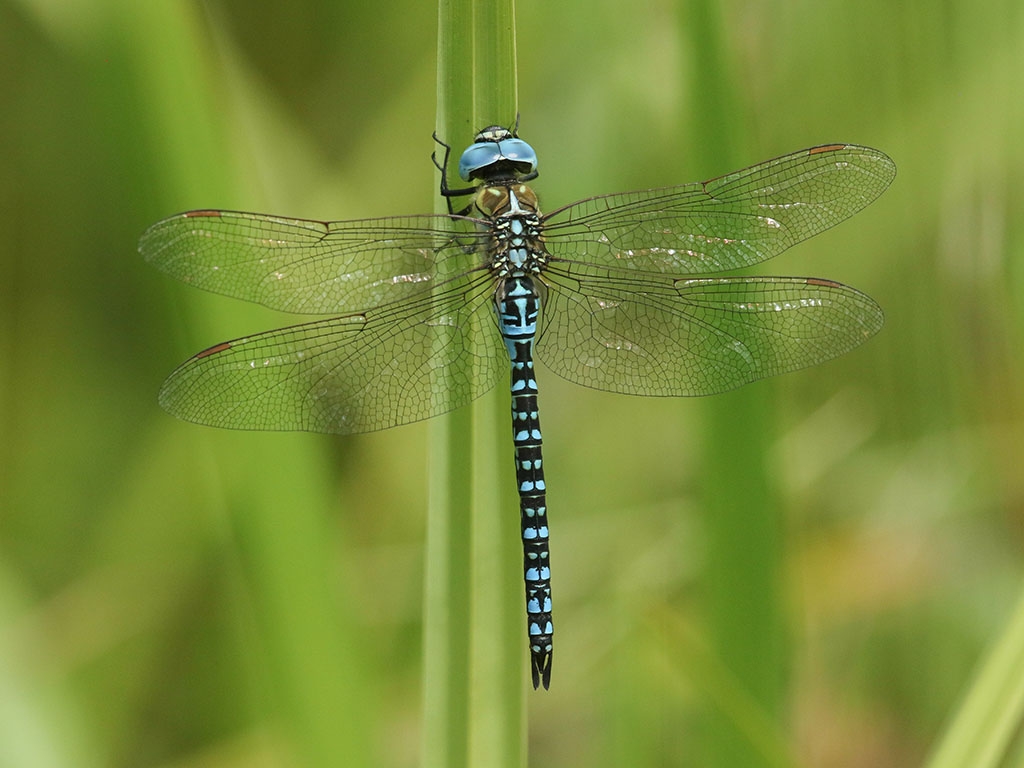 Southern migrant hawker, our newest summer guest
Southern migrant hawker, our newest summer guest
Butterflies feeling the heat
On the flip side, our grassland-specialist butterflies have had a tougher summer. Those scorching spells dried out their grassy hangouts far too quickly, leaving food plants scarce and flowering periods much shorter than usual.
WWT Caerlaverock: Toads, tadpoles and a whole lot of hopping about
This summer has been a weather rollercoaster – stop–start, wet–dry - a proper British mix! A dry spring meant our natterjack toads kept a low profile until early June, when rain finally arrived. Cue a sudden burst of spawning action, and soon there were tadpoles galore in at least four different ponds.
But after the rain came more dry spells, so our team had to keep a close eye on things. Some ponds were evaporating so fast, some tadpoles were in danger of drying up. So, we quickly had to stage a “tadpole taxi” operation – moving them to other ponds where they could carry on growing. It was especially exciting to see the natterjack toads using two of the ponds we’d renovated. A real “if you build it, they will hop” moment. By early August we even spotted a few more tiny tadpoles, so fingers crossed for plenty more toadlets joining Caerlaverock’s population this year.
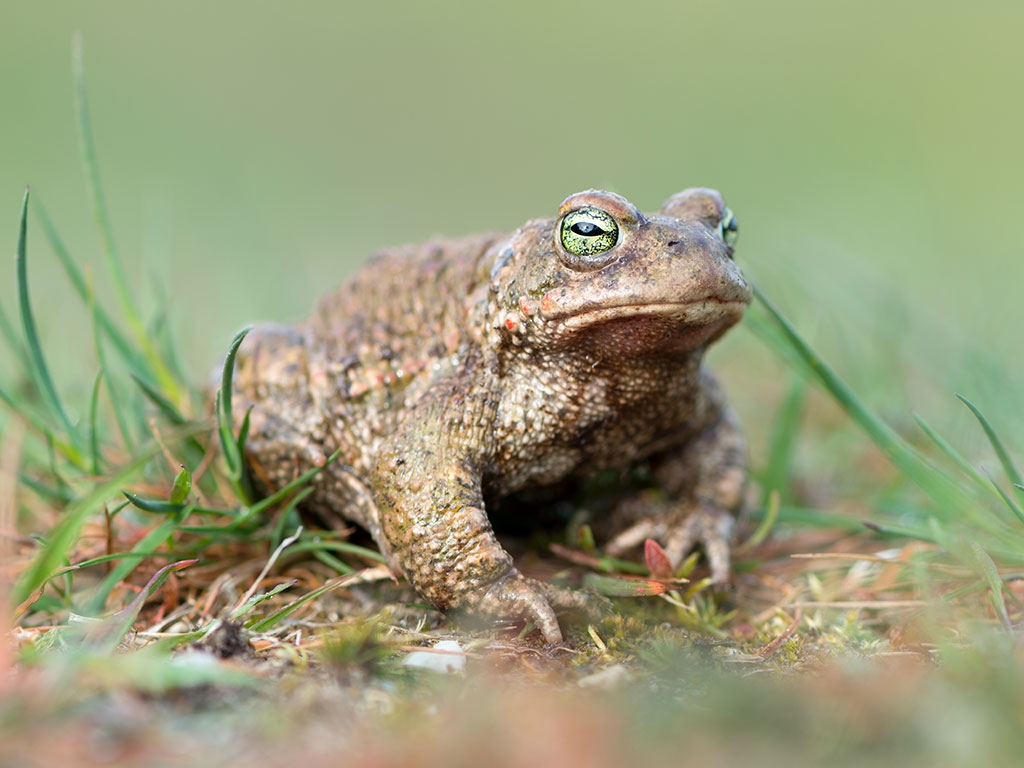 Natterjack toads live on the edge of WWT Caerlaverock’s saltmarsh and use the pools there throughout spring and summer.
Natterjack toads live on the edge of WWT Caerlaverock’s saltmarsh and use the pools there throughout spring and summer.
Mud magnets
The drying pools have left big patches of mud and if you’re a wading bird, that’s basically an all-you-can-eat buffet. Greenshank, green sandpiper, and common sandpiper have all been regular diners. We even had two little ringed plovers hanging about for a week… perhaps eyeing up the place for next year’s nesting season?
Marsh harrier mayhem
Nearby, marsh harriers had a successful nesting season, and the grown-ups and fledglings were seen hunting daily over the reserve in August. Wherever they go, they send flocks of curlew, lapwing, and starlings into the air.
Dragonfly delights
Our Dragonfly Festival brought with it not one, but two new species for the reserve – the black-tailed skimmer and the broad-bodied chaser – taking our total to 18 species. And just to keep things interesting, we also added a horse leech to the invertebrate list… caught in the act of eating a snail!
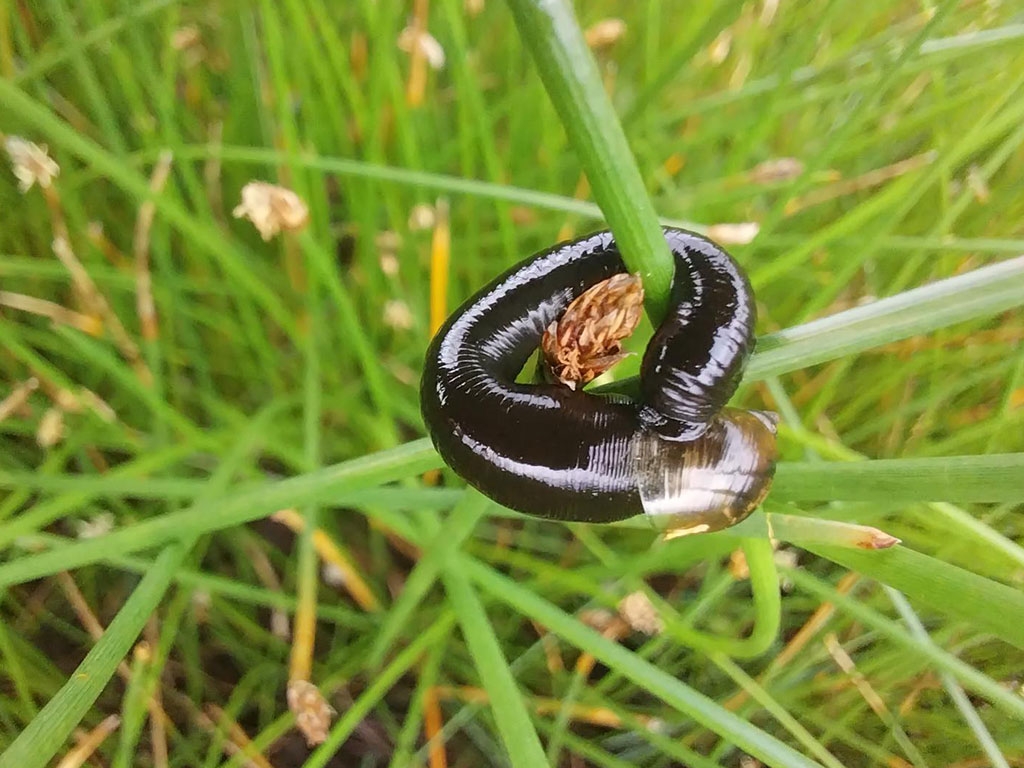 A horse leech eating a snail
A horse leech eating a snail
Nightjars and wildflowers
Working with partners across the Caerlaverock peninsula, we helped Forest Land Scotland monitor breeding nightjars on Lochar Mosses, just north of us. These incredible birds hunt over our insect-rich reserve, so we like to think of them as “honorary residents”. We also lent a hand to Caerlaverock Estate’s monitoring of their new wildflower grassland – more blooms mean more bees, butterflies, and birds.
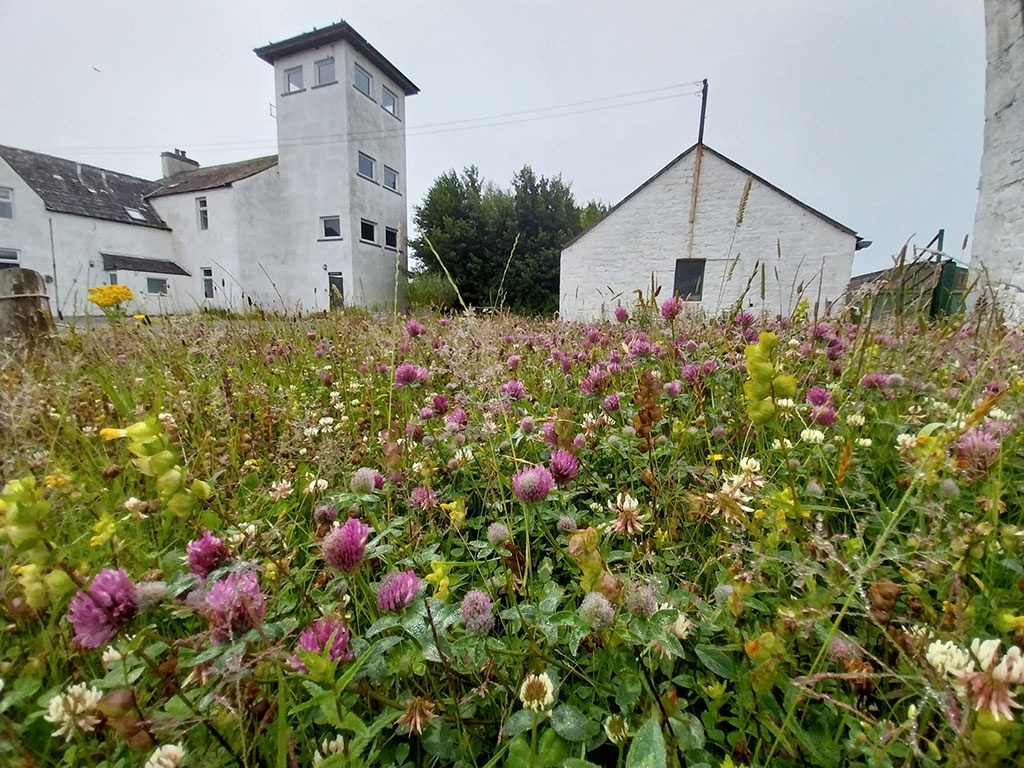 Newly created wildflower grassland in the courtyard at WWT Caerlaverock
Newly created wildflower grassland in the courtyard at WWT Caerlaverock
Diggers, drains and dreaming of rain
It’s digger season! With the dry weather holding in August it was time to get our machines out to block drains and create pools, helping us hold on to as much water as possible for wildlife. For the team, it’s a funny wish list: dry weather while the diggers are out, then buckets of rain to fill up all the new pools. Unlikely, but we can dream! This is the last year of the Wilder, Wetter Caerlaverock project, so we’re digging in (literally) to make the most of it.
Saltmarsh adventures
No summer is complete without a walk far out on the Caerlaverock saltmarsh – that magical in-between world where you’re a long way from both sea and land.
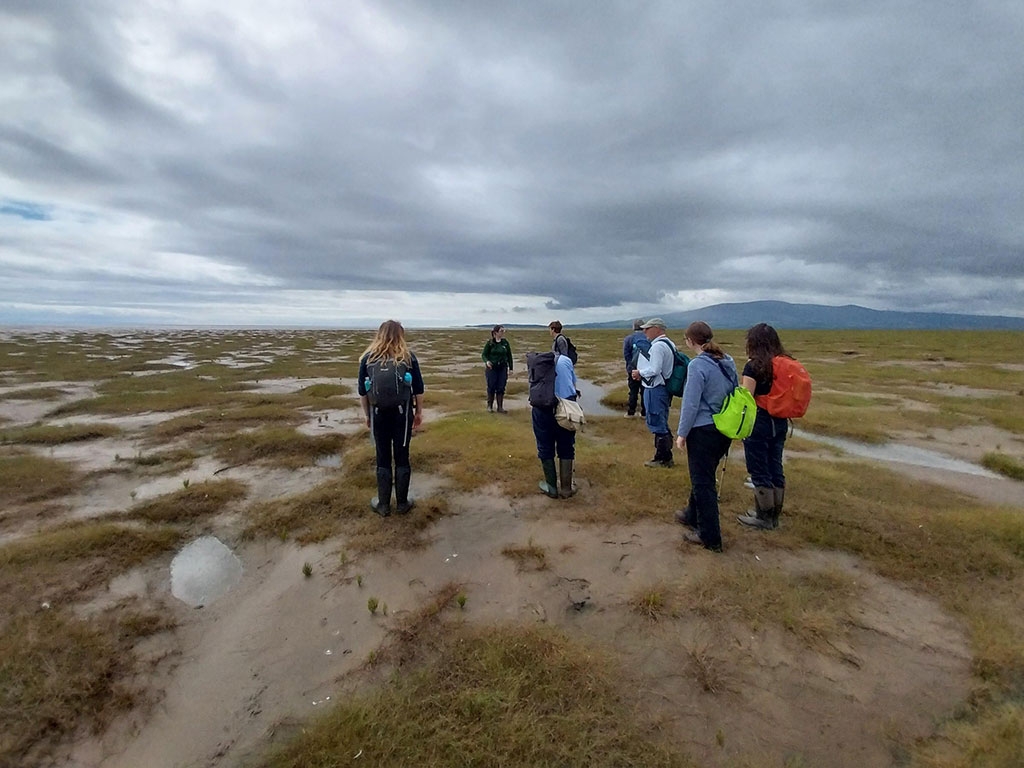 Saltmarsh at WWT Caerlaverock
Saltmarsh at WWT Caerlaverock
This year’s highlights included plant ID training and spotting a large patch of the declining sea lavender – a real Solway treasure. As always at Caerlaverock, every trip brings something new… and a few surprises along the way.
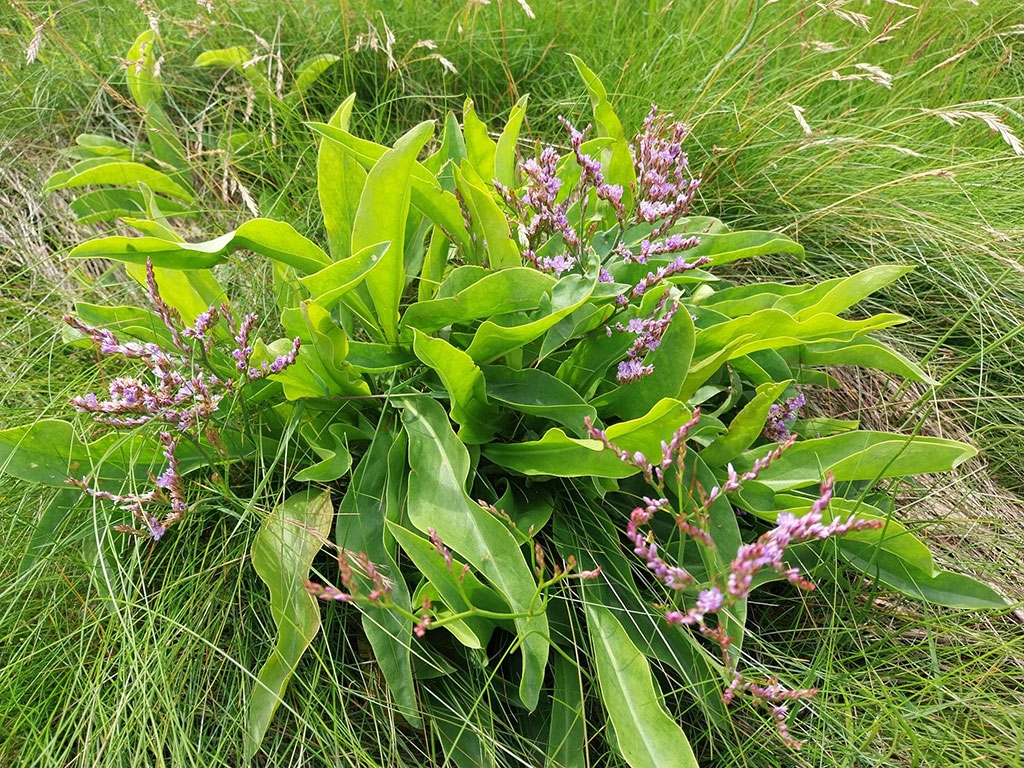 Sea lavender – the saltmarsh’s purple jewel
Sea lavender – the saltmarsh’s purple jewel
WWT Arundel: From nest disasters to fledgling feasts
After last year’s disastrous spring when many tit nests failed through starvation, this year has been a complete turnaround. We’ve had fledglings everywhere! Greenfinches are also doing well with fledglings popping up all over the reserve.
Egrets? We’ve had a few
Cattle egrets have been thriving, with at least 24 nests this year, many with well-grown chicks. Their constant chatter from the treetops has given us all a wonderful summer soundtrack. And for the first time, at least one pair of little egrets have bred here too, producing two juveniles.
Marsh harriers have had a brilliant year, fledging three young from the reedbed. The youngsters were seen showing off daily with plenty of noise, swoops, and dives… though their landings were still a bit ‘crash-and-pray’.
Good news too for our sand martins which were on to their second broods in July. It’s been fascinating to watch their shift work as they swap incubation duties every 15 to 30 minutes. It was also great to see our barn owls bucking the national trend. We successfully ringed three chicks this year.
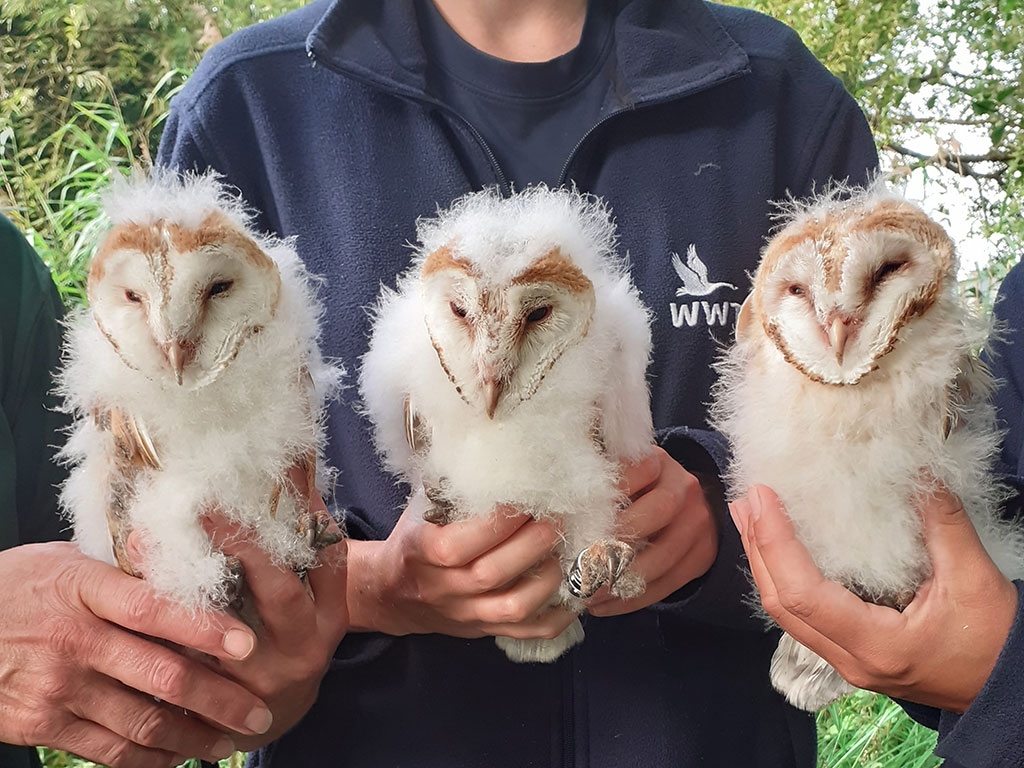 Barn owl chicks
Barn owl chicks
High flyers with big appetites
Meanwhile, the resident black-headed gull colony did well, despite two particularly murderous herring gulls who seemed to think everything on site was theirs to eat – black headed gull chicks, mallards, pochards… even fish intended for the pelicans. Given their size, they should be too heavy to fly, but they still manage daring fly-bys close enough to brush your shoulder (and occasionally leave “presents” down your neck!).
A crowd pleaser performs for the cameras
Our water voles have been spotted in the reedbed despite latrine surveys showing the lowest usage ever and they’re drawing in quite the crowd of photographers with a lot of giant lenses on show. And our summer blooms have been spectacular, especially yellow loosestrife, which is great news for the yellow loosestrife bee.
WWT Welney: Sunshine, cows and a chorus of corn buntings
Spring rolled straight into summer at WWT Welney with wall-to-wall sunshine and barely a drop of rain. Luckily, the Ouse Washes have a secret weapon - a tidal top-up when the river brings in fresh water. We’re still perfecting the timing, but it’s a lifesaver in dry years like this one.
Cows on a mission
Our 470 beef cattle (plus their calves) arrived right on cue to do their bit for nature, grazing the grassland into the perfect patchwork for wildlife. Of course, with so many hooves on the move, the reserve team has been busy with daily welfare checks, bringing animals in when needed to treat lameness or other ailments. The hot, dry weather wasn’t great for grass growth, and our hay crop came in at only half its usual size. Still, we’ll make it work. Wildlife-friendly farming is all about adapting to what the season throws at us.
Breeding bird highs and lows
For the first time in years, we managed all three survey visits to both the Ouse Washes and Lady Fen (previous springs were too wet and flooded to manage it). It was a season of mixed fortunes. The Ouse Washes saw good breeding numbers for lapwing, redshank and oystercatcher, but the parched conditions weren’t so kind to snipe. Lady Fen had its challenges too, with dry weather and some unwelcome fox visitors getting through the predator fence. Still, there was a silver lining. It’s likely some birds may have moved to the Ouse Washes to nest instead.
Black-tailed godwits had a particularly tough season, with no young fledged and very few chicks spotted. Though it was good to see both ringed and unringed adults on site. On the brighter side, bitterns bred here again (their feeding flights are always a thrill to watch), great white egrets are on the up, marsh harriers fledged young from three nests, and the ‘jangly keys’ call of corn buntings was heard across the reserve.
Beetles, dragons and a splash of rarity
Away from the birdlife, the rare and beautiful tansy beetle which is found in just three UK locations had a bumper year here, with several individuals spotted. Our team also enjoyed a dragonfly masterclass from local expert David Chandler, adding species like scarce chaser and Norfolk hawker to the season’s sightings.
WWT Slimbridge: Rare visitors and summer surprises
There’s a new star on the Slimbridge stage – the willow emerald damselfly is breeding here for the first time! With this fresh arrival, it’s likely we now have 20 different dragonfly and damselfly species calling the reserve home.
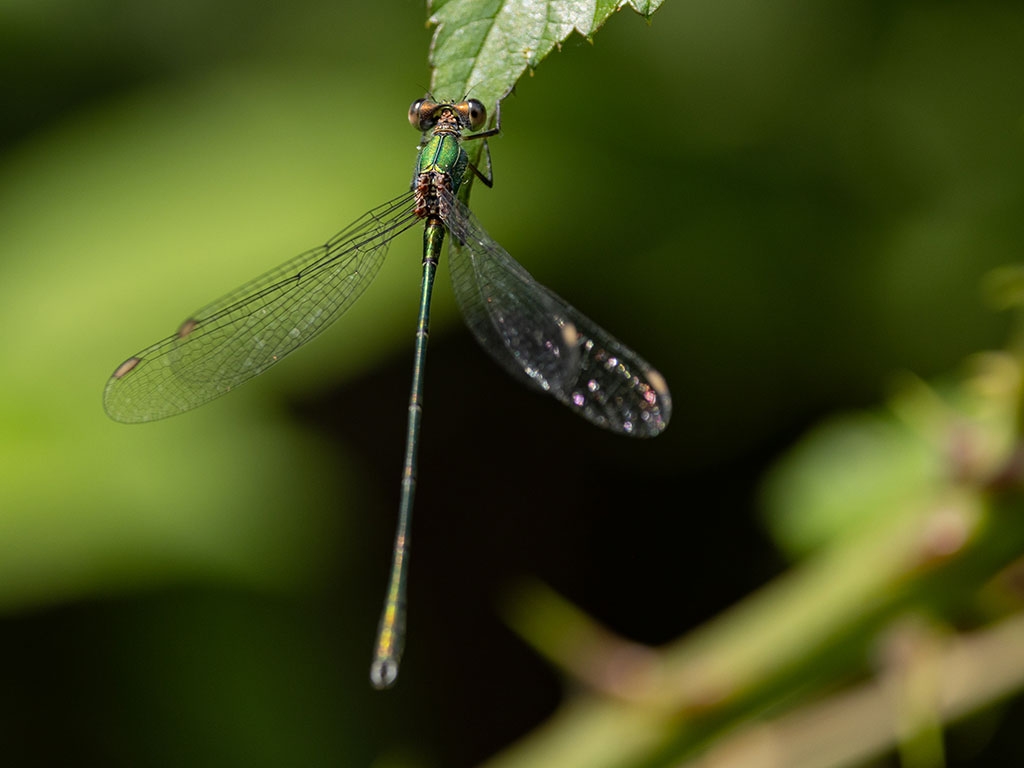 A willow emerald damselfly
A willow emerald damselfly
And as if that wasn’t enough, we spotted two blue-eyed (southern migrant) hawkers on 29 June – only our 5th and 6th sightings ever! Even rarer still, a green-eyed (Norfolk) hawker made a special appearance for just our second record.
Beauties in the reeds
From 3 to 9 July, a family of seven bearded tits popped up, followed by a couple of stragglers later in the month. Where they nested is a bit of a mystery. Maybe they travelled from South Wales or Somerset, or perhaps they raised their young secretly in our southern reed beds or the nearby canal’s Timber Pond? Wherever they came from, they brought plenty of charm.
A porpoise popping In
On 28 July, a harbour porpoise was spotted in the River Severn – a magical reminder that the watery world just beyond the reserve’s edge is full of surprises too.
A guest list to be proud of
Summer brought a cast of rare visitors, including a graceful white-winged tern and a first-summer Caspian tern. A small number of common scoters dropped by, but a flock of 27 on 17 July really stole the show. The Severn shorelines also saw a flurry of waders this year, including a fine run of spoonbills and wood sandpipers.
Booming marvellous
In a WWT Slimbridge first, marsh harriers successfully raised two young – a fantastic milestone for the reserve. Our bitterns were heard booming throughout summer, though no chicks have been spotted yet. And the elegant white-spotted bluethroat held onto his territory for an impressive fifth season in a row – clearly a loyal Slimbridge resident!
Chicks against the odds
The summer drought made life tough for some breeding waders and cranes. But there were still successes, with ten avocets, four oystercatchers, one lapwing and three redshank raising young. Gadwall and shelduck enjoyed a bumper breeding season, with many broods reared all the way to fledging.
WWT Castle Espie: Comma comebacks and owls on the wing!
After a five-year break, the charming comma butterfly has fluttered back to Castle Espie and we couldn’t be more excited to see this beautiful visitor grace our site again! The long-eared owls also had a fantastic season, with three youngsters successfully fledging. And the herons? They’re doing well too, with two young herons taking flight from their woodland nest. We also counted 11 tern nests, and by August, some lucky pairs were already proud parents to adorable chicks.
WWT Llanelli: A summer of wildlife wins despite a swimming fox
After a busy winter managing habitats around Deep Water Lake, we were thrilled to see lapwings putting on a show, displaying around the main island and Western Scrapes. Sadly, nesting success was limited. Turns out a cheeky swimming fox has been making regular appearances, causing a big shift! Many gulls have now moved to nest safely within the predator-proof fence in the Freshwater Lagoon.
Songbirds steal the show
Our breeding bird surveys show it’s been a fantastic year for passerines! Warblers are singing loud and proud, including reed, sedge, blackcap, chiffchaff, whitethroat, lesser whitethroat, and even the rare garden warbler, which is a real treat for our reserve. Stonechats and greenfinches are back too, giving us hope after tough years battling Trichomoniasis. We even had a cuckoo serenading the reserve all spring, with a lovely courting pair spotted twice. Plus, kingfishers have successfully nested in our artificial bank, and by August their second brood was almost ready to take flight.
Passage visitors bring the excitement
This year’s passage highlights included garganey, wood sandpiper, pectoral sandpiper, spotted redshank, avocet, ruff, grasshopper warbler, little ringed plover, little tern, up to 37 Mediterranean gulls, and a thrilling flash of a Pacific golden plover! Otters have also been spotted regularly, even during the day, making us wonder whether there’s a family nearby that they’re feeding?
It’s been buzzing
It’s been a great year on the reserve for all sorts of insects, including butterflies, moths and dragonflies. White-letter hairstreaks made several appearances and we even spotted a rare lunar hornet moth - only the second time it’s been recorded at Llanelli. Dragonflies and damselflies have also been out in force, with small red-eyed and emerald damselflies adding to the excitement.
Our wildflowers have also been flourishing with beautiful pyramidal and bee orchids joining the abundant southern marsh orchids. This year we’ve also been trialling a small herd of English goats to munch down bramble and other tricky vegetation. We’ve also been clearing pathways, repairing fences, and replacing old boardwalks with new paths to help us access key areas for pond and tree care. Our volunteers have been busy too and have been helping us install over 20 new bat boxes.
WWT Washington: Sunshine, surprises and summer stories
Late spring and early summer have been a mixed bag here at Washington, full of wonderful wildlife moments but also a few challenges thanks to the weather.
When the rain stayed away…
It was a bone-dry spring at WWT Washington, and some of our ponds have really felt the pinch. Top Meadow Pond has been without water all season, so no dragonflies or great crested newts have been able to breed there this year. Other ponds have been running low too, and even some of our trees are showing signs of stress. Our baby saplings are really struggling, and sadly, the ash trees that had been bouncing back from disease have taken another hit. There’s one bright spot though. We’ve managed to keep Wader Lake topped up! But the lack of fresh rainwater has made it a perfect hangout for algae, which has affected the water quality. Nature always keeps us on our toes.
Mysteries and surprises for our birds
It’s been full of drama for our birds this season. Lapwings started strong but abandoned their nests in April. Some tried again, but none managed to fledge young. Sand martins arrived in good numbers early on, but then mysteriously left their nesting bank empty. The common terns kept us guessing too, arriving fashionably late. But by August things were looking up with 42 pairs nesting. What’s more, one of the parents is an incredible 23 years old!
There have been some lovely surprises too. Little ringed plovers displaying over Wader Lake for the first time in over five years, a pair of little egrets nesting, oystercatchers raising chicks around the site, and a healthy heronry with around 30 nests. Willow tits have had a great year as well, with at least two broods fledging. And we’ve also seen spoonbill, wood sandpiper, whimbrel and garganey dropping in.
Mammal moments
Brown hares have been bounding through the meadows, roe deer have been quietly raising young, and our artificial otter holt has become a family home for a female otter and her two playful pups. Even the bats seem happy, with good numbers recorded during evening surveys.
Mini-beasts and mighty wings
We’ve had some real insect stars this season, including our first-ever black-tailed skimmer dragonfly!
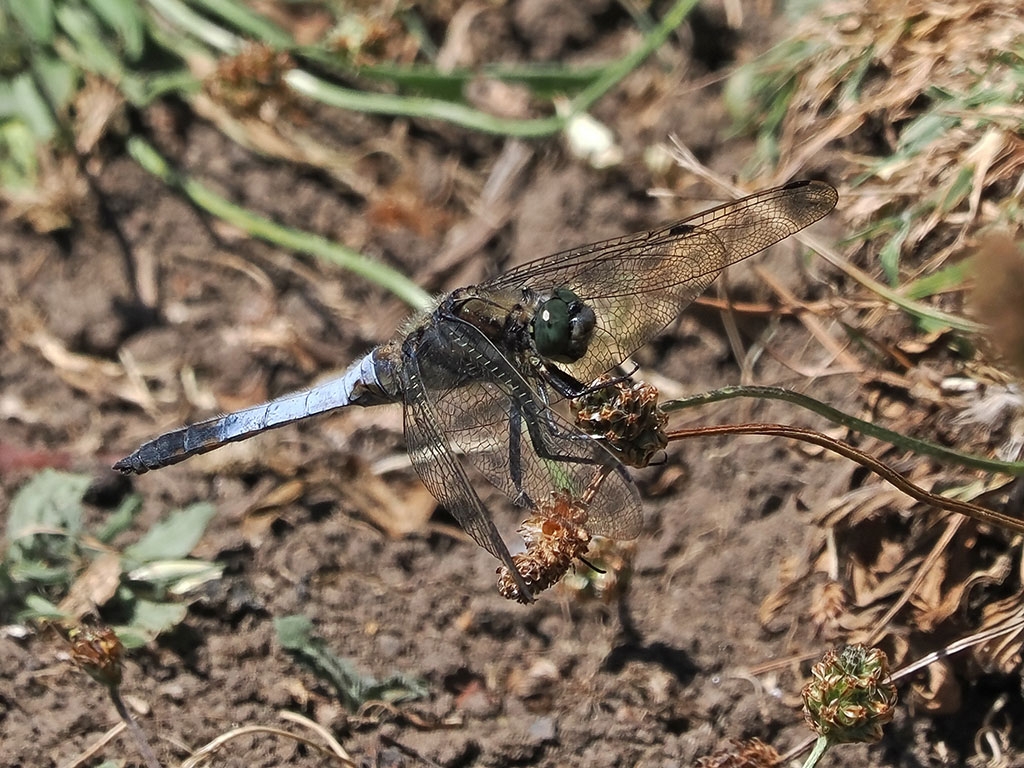 Black-tailed skimmer © Christopher Bill
Black-tailed skimmer © Christopher Bill
It’s also been a brilliant year for rhinoceros beetles, proof that leaving standing deadwood pays off.
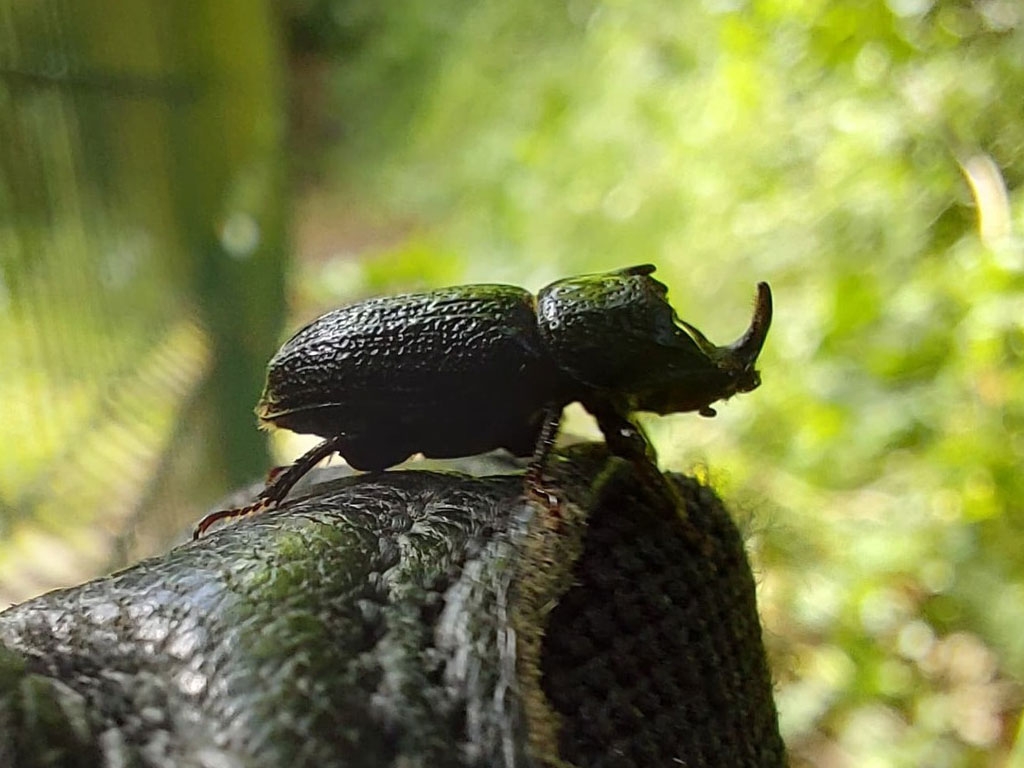 Rhinoceros beetle
Rhinoceros beetle
And how about this for some cool caterpillar names – you can’t beat the stripy mullein moth caterpillar or the fluffy sallow kitten moth caterpillar – both of which have been seen around our reserves.
Flowers, friends and fighting the invaders
A beautiful pyramidal orchid popped up in our car park, reminding us nature can be full of surprises. But it’s also been a busy year battling invasive plants like giant hogweed, Japanese knotweed and crassula. Thankfully, our new herbicide injector is proving handy for tricky spots near water, and our amazing volunteers, plus some visiting corporate groups, have been a huge help keeping things under control.
WWT Martin Mere: Droughts, drones and a whole lot of drama
This spring was parched. So dry in fact that keeping water levels up has been a real challenge. But we’ve got something exciting in the pipeline (literally): shiny new water control structures are on the way! They’ll help us manage water much better across the reserve. Which is great news for our wetland wildlife and for our peatland soils. Keeping those soils damp is key, not just for plants and animals, but for locking away carbon instead of letting it escape into the atmosphere. Win-win.
Happy cows in flower-filled meadows
While the wetlands were feeling thirsty, our English longhorn cattle were having a cracking spring. We welcomed 23 calves this year, all looking strong, healthy, and very content munching their way through the wildflower-rich meadows. They’re basically the poster calves for countryside bliss.
 English longhorn cattle enjoying our wildflower-rich meadows
English longhorn cattle enjoying our wildflower-rich meadows
Wader woes and clever kestrels
Things started well for our lapwings and avocets in early spring, with 42 pairs of lapwings and 61 pairs of avocets setting up home. But as the wetlands dried, many moved on, leaving 29 lapwing pairs and 32 avocet pairs. They hatched plenty of chicks… but here’s where nature’s plot thickens.
With field voles in short supply, a family of kestrels switched to hunting wader chicks, taking over 100 to feed their own four hungry youngsters. We stepped in with supplementary food for the kestrels - enough to keep them going without hammering the wader chicks. It worked! We fledged 16 avocets and 17 lapwings.
Five of our avocet chicks got colour rings this year, joining our growing bird family tree. One of our adult males has quite the travel story. It was ringed as a chick in Cádiz, Spain, back in 2014 and has clocked up a 2,000km migration from his birthplace to breeding here at Martin Mere. Last year’s chicks have been spotted far and wide, from the Netherlands to Gibraltar Point. But sadly none have come back home to breed just yet.
Barn owls take a breather
It wasn’t just kestrels feeling the vole shortage. Our four pairs of barn owls didn’t produce a single egg this year. And we’re hearing the same from across the country. With fewer field voles around, it’s been a tough season for these hunters.
Bitterns, harriers and a high-tech helping hand
Not everything struggled this spring. Our reedbeds stayed wonderfully wet, and we had one booming male bittern attracting four females. At least three chicks fledged. Not bad for this famously secretive bird! Marsh harriers also had a strong season with six nests, two of which successfully fledged chicks (five from one, three from the other).
And here’s where the gadgets come in. We used a thermal drone to locate both harrier and also four bittern nests in record time, sometimes in under a minute! This clever tech let us count the chicks in the nests and see how old they were, all from high up in the sky, so keeping disturbance to a minimum.
 Thermal drones helped us quickly check on nests and chicks with minimal disturbance to wildlife
Thermal drones helped us quickly check on nests and chicks with minimal disturbance to wildlife
WWT Steart Marshes: Every chick counts
We’ve been delighted to see a flock of 13 cattle egrets, including several cheeky juveniles, likely from a nearby breeding hotspot. Autumn visitors are already starting to drop by too, with greenshank, common and green sandpipers, and black-tailed godwits making their seasonal appearances.
One special sighting was a juvenile ringed plover out on Bridgwater Bay. Fingers crossed it’s from a local nest! We’ve been working hard to protect these shorebirds by putting up fences and signs to keep people from disturbing their nesting spots. Ringed plovers have had a tough time in recent years, so every chick counts!
Mammal matters: Water Voles Making Waves
Our water voles have been getting some special attention this summer. Ecologists have been exploring the saltmarsh to study the water voles that call it home, looking at how they thrive in both salty and freshwater wetlands. They’ve found all the telltale signs: latrines, crab leftovers, cozy burrows tucked away in ditches and creeks. They’ve even been measuring soil and salinity to get the full picture. Come September, we’ll be watching the high tides closely to see how the voles respond when parts of their watery home get flooded. Will they dash back quickly? We’re excited to find out!
Moth magic: Nighttime wonders under the light
This summer, we’ve been playing detective in the dark with moth traps, and wow, what a moth-tastic haul! From just three traps, we’ve spotted at least 47 species of macro moths, plus a few mysterious ones we’re still trying to ID (rookie moth-ers, we confess). The stars of the show? Stunning hawk moths with elephant, poplar and eyed hawk moths fluttering in alongside a lappet and an oak egger moth.
Plant power: The carnivorous bladderwort surprise
Nature’s little surprises keep popping up! We’ve discovered bladderwort spreading through some of our freshwater wetlands on the reserve. While not rare, this plant is a new record for us, and those bright yellow flowers are suddenly everywhere.
But here’s the coolest part. Bladderwort is carnivorous! It traps tiny insects inside little underwater bladders, using suction to gulp them down. It’s like a mini underwater vacuum cleaner, and definitely one of the most fascinating plants around here.
Ready to get your nature fix?
Each of our centres offers the most wonderful wildlife encounters. And with autumn just around the corner heralding the arrival of our migrating visitors, there’s even more for you to see.
Not a member? Book online and save time on arrival.
Find your nearest wetland siteAll species work on WWT reserves is carried out under an approved license.
Header image: A male marsh harrier
